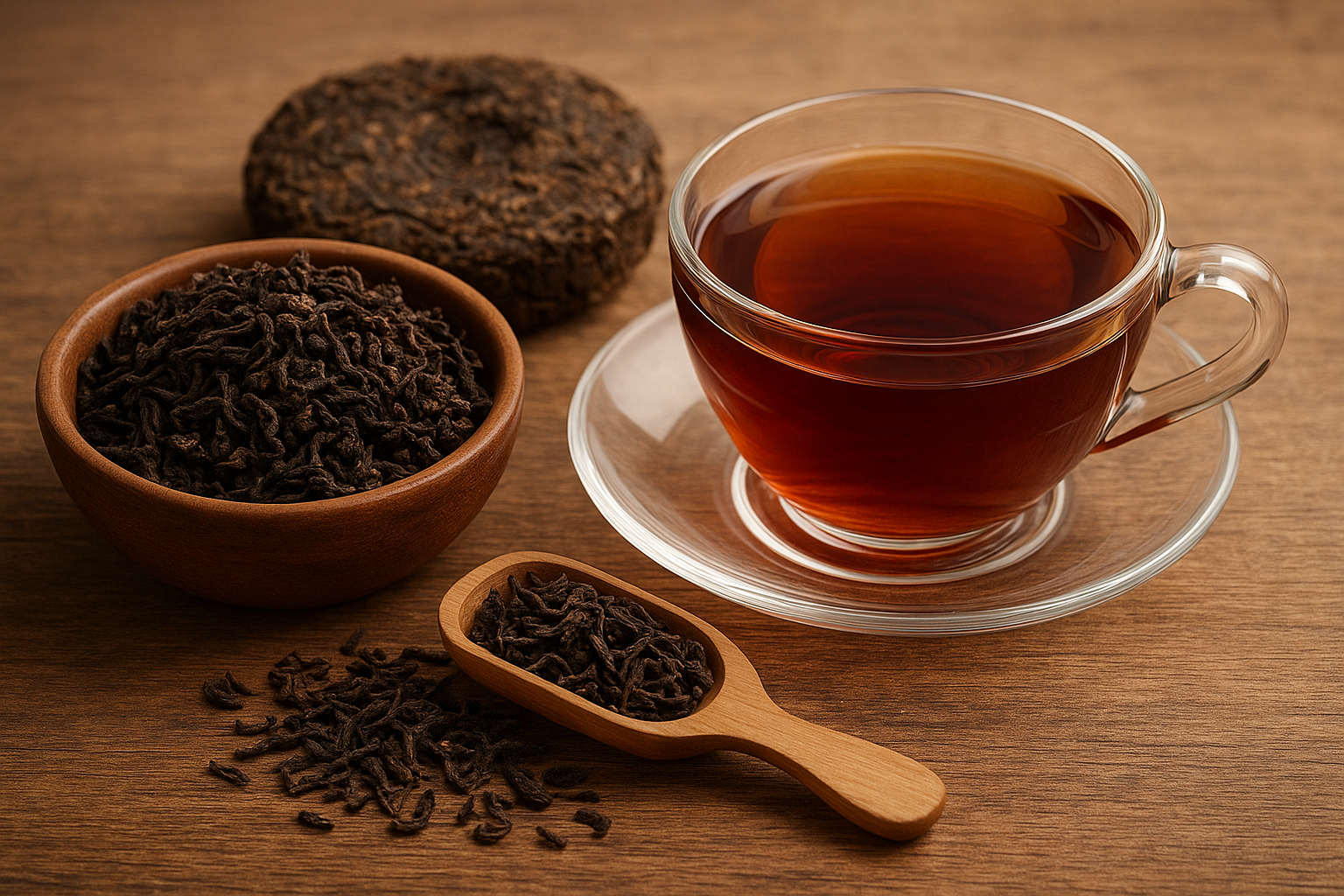Cha pu erh tea is a unique and celebrated type of fermented tea that originates from the Yunnan province in China. Known for its deep, earthy flavor and rich aroma, this tea has been cherished for centuries by tea enthusiasts and traditional herbal practitioners alike. Unlike many other teas, cha pu erh tea undergoes a special fermentation process that not only affects its taste but also enhances certain health-promoting qualities.
In recent years, cha pu erh tea has gained attention worldwide due to its potential health benefits, its unique aging process, and the cultural stories woven into each leaf. Tea lovers are increasingly seeking out this special brew not just for its flavor, but also for the wellness properties and centuries of tradition it represents.
In this article, we will explore the origins of cha pu erh tea, its unique fermentation process, its health benefits, proper brewing techniques, the different varieties available, common myths surrounding it, and tips for storage and preservation. By the end, readers will have a comprehensive understanding of cha pu erh tea and why it remains a treasured drink across generations.
The Origins of Cha Pu Erh Tea
Cha pu erh tea has a long and fascinating history rooted in the misty mountains of Yunnan, China. Archaeological evidence suggests that tea cultivation in this region dates back over a thousand years, and Pu-erh tea quickly became a key commodity for local communities. Traditionally, the tea leaves were harvested from ancient tea trees, some of which still stand today and are considered national treasures.
The cultivation and processing methods of cha pu erh tea are intricate and precise. Skilled farmers carefully pluck mature tea leaves and subject them to withering, rolling, and fermentation techniques that have been refined over generations. These methods are essential for developing the complex flavors that cha pu erh tea is known for.
Beyond its agricultural significance, cha pu erh tea holds a deep cultural and ceremonial value. In Yunnan and other tea-growing regions, the tea is often used in traditional ceremonies, symbolizing respect, hospitality, and a connection to heritage. Sharing a cup of cha pu erh tea is not just a culinary experience; it is a gesture that reflects centuries of tradition and appreciation for the art of tea.
Understanding the Unique Fermentation Process
One of the defining characteristics of cha pu erh tea is its fermentation. Unlike green or black teas, Pu-erh tea undergoes a controlled fermentation process that transforms the chemical composition of the leaves. There are two primary types of cha pu erh tea: raw (sheng) and ripe (shou).
Raw Pu-erh is made by carefully drying and rolling fresh leaves before allowing them to naturally ferment over time. This slow, natural aging process can take years, and the flavor gradually develops, becoming richer and smoother with age. Ripe Pu-erh, on the other hand, undergoes an accelerated fermentation method that mimics the aging process, producing a dark, mellow tea in a much shorter period.
Aging and storage conditions significantly influence the flavor and quality of cha pu erh tea. Temperature, humidity, and exposure to air all play crucial roles in shaping the tea’s aroma and taste. Factors such as the region where the tea is grown, the type of tea tree used, and even the season of harvest can affect the final profile of the tea. This intricate balance of nature and craftsmanship is what makes cha pu erh tea both unique and highly sought after.
Health Benefits Backed by Research
Cha pu erh tea is more than just a flavorful beverage—it has long been associated with a variety of health benefits. One of the most well-known advantages is its support for digestive health. Drinking Pu-erh tea may help improve digestion, promote a healthy gut, and reduce bloating after meals.
Emerging research also suggests that cha pu erh tea may have positive effects on cardiovascular health and weight management. Some studies indicate that compounds in the tea can help regulate cholesterol levels and support metabolic function, contributing to overall wellness. While research is ongoing, many tea enthusiasts report noticeable benefits when incorporating Pu-erh tea into their daily routine.
Additionally, cha pu erh tea contains antioxidants, which play a vital role in neutralizing free radicals and supporting general health. These antioxidants contribute to the tea’s reputation as a natural wellness drink, making it a favored choice for those seeking both flavor and functional benefits.
How to Brew Cha Pu Erh Tea Perfectly?
Brewing cha pu erh tea is an art that can greatly enhance its flavor and aroma. The ideal water temperature for Pu-erh tea is generally between 195°F and 205°F (90°C–96°C). Using water that is too hot can make the tea bitter, while cooler water may prevent the full flavors from developing.
Traditional brewing methods often involve multiple infusions using a small teapot or a gaiwan. This allows the leaves to fully release their flavors over several short steeps, resulting in a richer and more complex taste. Modern brewing methods, including teabags and infusers, can also be effective if handled carefully, but may not provide the same depth of flavor as traditional techniques.
To enhance the experience, consider rinsing the tea leaves briefly before the first infusion. This “awakens” the leaves and removes any residual dust, ensuring a smoother, more aromatic cup. Paying attention to steeping times and leaf quantity can make a noticeable difference in the final flavor profile, whether you are enjoying a mild, earthy cup or a bold, robust brew.
Different Types and Varieties of Pu-erh Tea
Cha pu erh tea comes in a variety of forms, each offering a unique tasting experience. Loose-leaf Pu-erh allows for full expansion of the tea leaves during brewing, maximizing flavor and aroma. Compressed cakes, bricks, or tuocha shapes are traditional forms that facilitate aging and storage. These compact shapes are also historically significant, as they were once used for trade and transportation.
Within these forms, regional differences create notable variations in taste. Tea from older trees in specific areas of Yunnan can have deeper, more complex flavors, while younger leaves may produce a lighter, fresher profile. Choosing quality Pu-erh tea involves understanding these differences, considering leaf age, and selecting reputable sources to ensure authenticity.
For beginners, starting with a well-aged or ripe Pu-erh can offer a smoother introduction, as these teas tend to be less astringent and more forgiving in flavor. Exploring different types gradually can provide a richer appreciation of the diversity and artistry of cha pu erh tea.
Common Myths and Misunderstandings
Despite its popularity, cha pu erh tea is often surrounded by myths and misconceptions. One common misunderstanding is that all Pu-erh tea must be aged for decades to be valuable. While older teas are prized, younger Pu-erh can also provide excellent flavor and quality, particularly ripe varieties.
Another area of confusion is caffeine content. Pu-erh tea does contain caffeine, but generally less than coffee and often less than black tea, depending on fermentation and brewing. Drinking it in moderation is safe for most people, and many enjoy it as a gentle morning or afternoon beverage.
It is also important to differentiate Pu-erh from other dark teas. Unlike black tea or oolong, Pu-erh’s fermentation process is unique and contributes to its distinctive earthy, smooth, and sometimes slightly sweet taste. Understanding these differences helps tea drinkers make informed choices and appreciate the nuances of this ancient beverage.
Storing and Preserving Your Pu-erh Tea
Proper storage is essential for maintaining the quality and flavor of cha pu erh tea. Ideally, tea should be stored in a cool, dry place away from strong odors, as Pu-erh leaves can absorb surrounding scents. Storing tea in breathable containers allows it to age naturally, which can enhance its flavor over time.
Aging is a key aspect of cha pu erh tea, especially for raw varieties. Over the years, the tea develops deeper, more complex flavors, often improving with patience and careful attention to storage conditions. Conversely, poor storage—excessive moisture, direct sunlight, or airtight containers—can negatively affect the tea’s taste and aroma.
By taking simple precautions and monitoring environmental factors, tea enthusiasts can enjoy cha pu erh tea at its finest, whether freshly brewed or after years of careful aging.
Conclusion
Cha pu erh tea is a remarkable beverage that combines centuries of tradition, unique fermentation, and potential health benefits into every cup. From its origins in Yunnan to its growing global popularity, cha pu erh tea continues to captivate tea lovers with its earthy flavor, rich aroma, and cultural significance.
Exploring this tea mindfully allows drinkers to experience not just its taste, but also the history and craftsmanship behind it. Whether enjoyed for wellness, tradition, or simple pleasure, cha pu erh tea remains a timeless choice for anyone seeking a deep, satisfying, and meaningful tea experience.
For those ready to explore, every sip of cha pu erh tea offers a connection to a centuries-old legacy of flavor, health, and cultural richness.
My name is Mustafa, and I have been blogging for over 5 years. I am passionate about sharing complete, accurate, and helpful information with my readers. Along with managing content on The Matcha Read, I also contribute blog posts to premium websites. My goal is to provide valuable insights in a clear and easy-to-understand way, so every reader walks away with useful knowledge.










